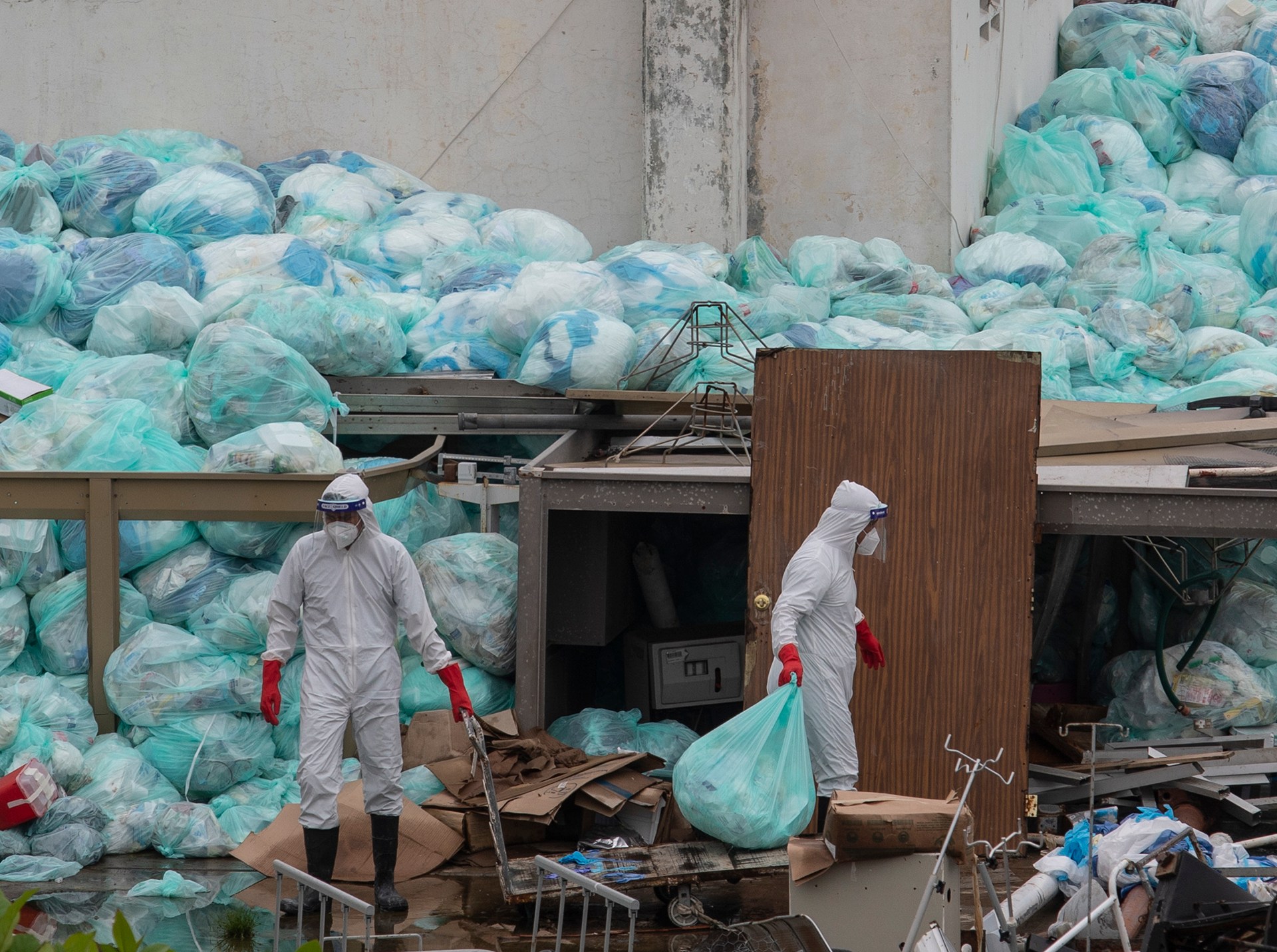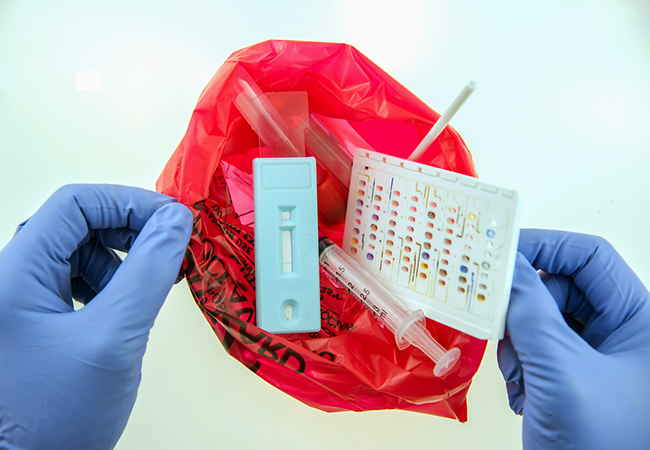Ease at Your Doorstep: Locating Reliable Medical Waste Removal Near Me
Ease at Your Doorstep: Locating Reliable Medical Waste Removal Near Me
Blog Article
Exploring Various Garbage Disposal Options for a Cleaner Environment
In the quest of a cleaner setting, the administration of waste disposal has emerged as a crucial focal point for lasting development. With a plethora of waste disposal alternatives available, varying from standard landfill techniques to cutting-edge waste-to-energy technologies, the option of exactly how we manage our waste has significant ramifications for our earth's well-being.
Recycling Techniques
Implementing efficient recycling methods is essential in minimizing waste and promoting sustainability in our setting. Recycling entails the process of converting waste materials into multiple-use items to stop unnecessary disposal. Among the most usual recycling methods is material recuperation, where products like paper, steel, plastic, and glass are collected, sorted, and processed to develop brand-new products. This process not just preserves natural deposits yet additionally reduces power consumption and greenhouse gas emissions related to creating new materials from scratch.
Another important recycling method is composting, which entails decomposing organic waste like food scraps and backyard trimmings right into nutrient-rich soil. By including these various reusing approaches right into our waste administration methods, we can considerably lower our environmental footprint and move in the direction of an extra sustainable future.

Composting Strategies
Effective waste monitoring practices, such as recycling approaches, lead the way for a cleaner environment, and currently, changing the focus to 'Composting Techniques', we check out sustainable methods to decay organic waste for ecological advantage. medical waste disposal.
Composting is a natural process that transforms organic waste, like food scraps and yard trimmings, into a nutrient-rich dirt change. The key to effective composting hinges on developing the appropriate equilibrium of green materials, such as vegetables and fruit scraps, and brownish materials, like dried twigs and leaves. These materials decompose with the aid of microorganisms, breaking down the waste right into important compost.
There are various composting methods offered to suit various needs. Traditional backyard composting includes layering natural products in a container or stack and regularly turning the mix to freshen it. Vermicomposting, on the various other hand, utilizes worms to damage down natural issue right into garden compost (click here). For those with limited space, interior composting systems provide a practical service. By using composting strategies, we can lower the amount of waste sent out to land fills while producing a useful product for enhancing soil and supporting plant development.
Incineration Advantages And Disadvantages
Incineration, as a waste disposal technique, provides both advantages and disadvantages that merit mindful factor to consider in the world of lasting waste monitoring techniques. On the favorable side, incineration can considerably minimize the volume of waste, decreasing the need for land fill space and possibly decreasing greenhouse gas discharges. Incineration also permits for the healing of power through the generation of power or heat, adding to source recuperation. The process can be utilized to ruin unsafe materials, offering a secure method for dealing with specific types of waste that may present threats to public health and the environment if left untreated.
Additionally, the high first investment and functional expenses of incineration facilities position financial obstacles, making it a less cost-effective choice contrasted to various other waste management approaches. Careful monitoring and regulation are essential to minimize these adverse impacts and take full advantage of the benefits of incineration as component of a detailed waste administration method.
Land Fill Monitoring Techniques
Garbage dumps play a critical duty in waste administration and environmental preservation by providing a control system for the disposal of solid waste materials. By condensing the waste, the volume is reduced, allowing for even more waste to be accommodated over time.
Moreover, the execution of everyday cover methods is important in lessening smells, stopping clutter, and decreasing the attraction of parasites. Covering the disposed waste at the end of every day aids to consist of smells and protect against possible ecological contamination. Furthermore, the tracking of garbage dump gas emissions and leachate degrees is critical in making certain that environmental criteria are satisfied which any kind of potential dangers to surrounding ecosystems are reduced.

Waste-to-Energy Technologies
One of the cutting-edge techniques to waste monitoring entails harnessing Waste-to-Energy innovations to transform strong waste into useful power resources. Waste-to-Energy (WtE) innovations include a variety of processes that intend to draw out power from waste materials through thermal, chemical, or biological methods. This conversion procedure not only lowers the volume of waste that winds up in landfills but likewise produces beneficial power sources such as electricity, warmth, or biofuels.
Incineration involves shedding waste at high temperatures to generate heat and electrical power. Gasification transforms waste into a syngas, which can be used for power generation or chemical manufacturing.
Applying Waste-to-Energy innovations can assist mitigate environmental issues linked with traditional garbage disposal techniques while all at once offering a renewable resource source. Nonetheless, cautious factor to consider has to be provided to discharges control and ensuring the sustainability of feedstock materials for these technologies to be genuinely advantageous for a cleaner atmosphere.

Conclusion
In conclusion, discovering numerous waste disposal choices such as reusing, composting, incineration, land fill management, and waste-to-energy innovations is essential for promoting a cleaner environment - click here. Each approach has its very own benefits and challenges, but by making use of a combination of these strategies, we can function towards minimizing the quantity of waste that winds up in land fills and eventually add to a more lasting future for generations ahead
With a multitude of waste disposal choices readily available, ranging from conventional garbage dump methods to innovative waste-to-energy technologies, the choice of how we manage our waste has far-ranging implications for our planet's well-being. medical waste disposal.Incineration, as a waste disposal method, provides both benefits and disadvantages that warrant cautious consideration in the world of lasting waste monitoring practices.Garbage dumps play an essential role in waste administration and environmental conservation by supplying a control system for the disposal of solid waste materials. By condensing the waste, the quantity is minimized, permitting for even more waste to be suited over time
One of the ingenious strategies Get More Information to squander management involves utilizing Waste-to-Energy modern technologies to transform strong waste into functional power sources.
Report this page